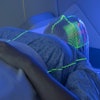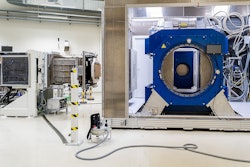Intensity-modulated radiation therapy (IMRT) and proton therapy offer equally high quality of life and tumor control for people with prostate cancer, according to a study presented September 30 at the American Society for Radiation Oncology (ASTRO) annual meeting.
The finding is from a phase III trial that compared the two treatments in 450 patients and could help patients make decisions about their treatment, noted presenter Jason Efstathiou, MD, PhD, of Massachusetts General Hospital.
“Patients now have many options for how they might manage their prostate cancer, but trying to sift through all of the information to understand the consequences for their quality of life can be confusing,” he said.
About 70% of new prostate cancer cases – more than 200,000 people in the U.S. each year – are diagnosed as localized disease. Since many of these patients will survive their cancer and live many years after treatment, their quality of life becomes particularly paramount when making treatment decisions, Efstathiou explained.
Thus, to aid patients in making decisions, Efstathiou and colleagues compared IMRT and proton therapy, two contemporary, advanced forms of external beam radiation treatment. The primary endpoint was to compare change from baseline in bowel quality of life (QOL) using the health care software score (range 0-100) at 24 months. Secondary objectives included comparing urinary and sexual functions, toxicity, and efficacy endpoints.
According to the findings, there was no difference between IMRT (224 patients) and proton therapy (226 patients) in mean change of health care software bowel score (p = 0.836), with both arms showing only small, clinically nonmeaningful decline from baseline.
In addition, the researchers observed no differences in other domains (urinary, sexual, hormonal) at any time point and no difference in progression-free survival between the treatments (93.4% vs. 93.7% at 60 months).
“We can use either of these tools with comparably excellent outcomes,” Efstathiou said.
Ultimately, there may be subgroups that benefit from one technology over another, and the group is actively continuing analyses of that, as well as whether similar outcomes may be found in patients with more advanced stages of the disease, he concluded.



















